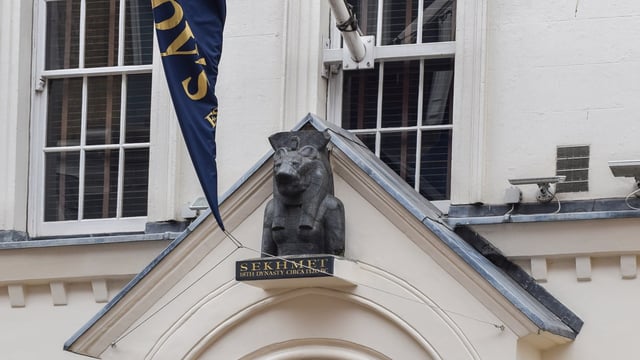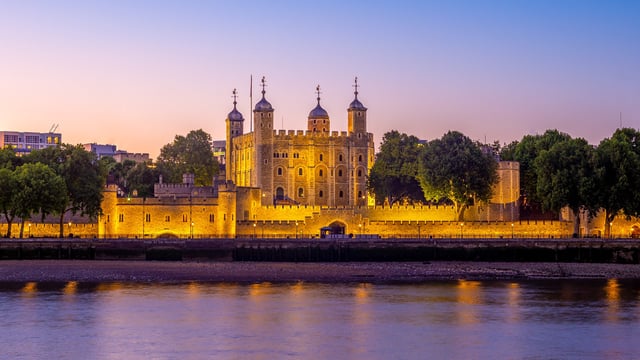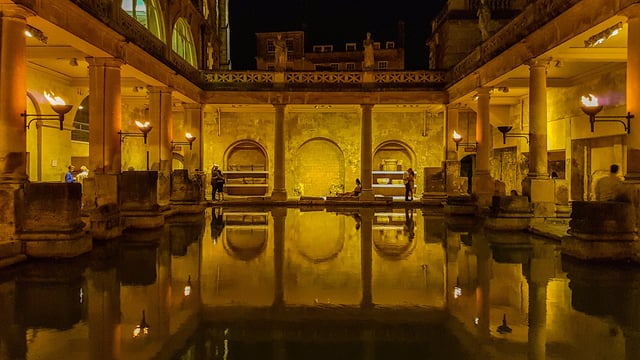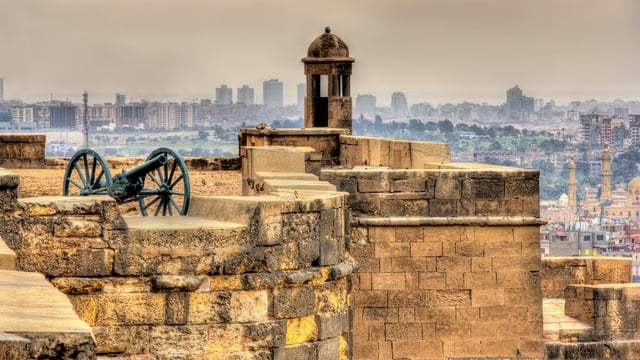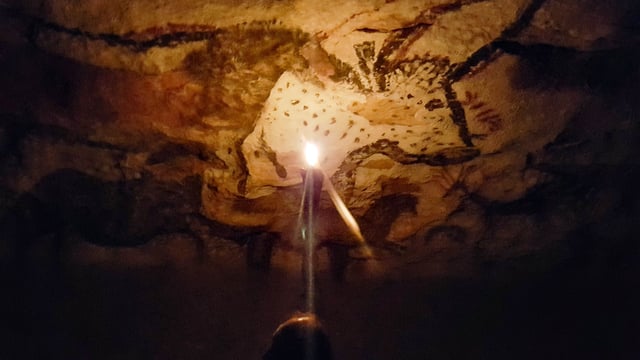London’s Bond Street is known widely for its expensive boutiques selling designer fashion and jewellery. It is also home to Sotheby’s, the world’s fourth oldest auction house in continuous operation. Sotheby’s was founded in London (1744), and moved to its current premises on Bond Street in 1917.
Above the entrance to the auction house is a black diorite sculpture of a female with a lioness’ head. Anyone who has seen a fair amount of Egyptian art will immediately wonder about a connection. Its position, however, will make many think it must be a replica of an original piece, or perhaps a more contemporary work that was inspired by ancient Egyptian art.
In fact, it is an ancient artefact, not a replica. Sekhmet statues have their origin in the 18th Dynasty (ca 1390-1352 BC), during the reign of Amenhotep III. Over 600 of these statues have been found throughout Egypt, many of which were recovered from Amenhotep’s mortuary temple alone. Sekhmet was the goddess of healing, and was depicted as a lioness. The inscription of the shelf is therefore accurate: Sekhmet 18th Dynasty circa 1320 BC. This has never been in doubt.
But how does such an object come to be on the street, so to speak?

Far from having been cast out to the elements, the bust is widely recognised as being a mascot for Sotheby’s. On the Our History page of the Sotheby’s website the only mention of the bust is made in a brief point about the move to Bond Street in 1917.
“The building had been, variously, the galleries of the French artist Gustave Doré, a parfumiers and a hostelry called the Black Horse. The wine cellars were turned into picture stores and an ancient Egyptian bust of the lion-goddess Sekhmet – Sotheby’s unofficial mascot – was installed above the front doorway.”
The legendary Swiss auctioneer Simon de Pury also refers to the bust as the Sotheby’s mascot in his 2017 autobiography, The Auctioneer: Adventures in the Art Trade. On how the bust came to be where it is today, de Pury repeats a version that seems to have been been copied by numerous websites and bloggers since at least 2012.

Chatwin and the Sotherby's Sekhmet
In his 2012 collection of essays, Babble, Charles Saatchi says that the bust was sold at auction in the 1880s for £40 but never claimed by the buyer. Where he got this information from he does not say. The only other reference I have managed to find is in a two-page piece by Bruce Chatwin included in the Sotheby’s catalogue for 1965/66: “There is a tradition, possibly inaccurate, that this sculpture was an unsold and unclaimed lot in the sale at Sotheby’s of the antiquities of Giovanni Belzoni but it does not appear to be listed in the catalogue.”
Before he was a traveller and a storyteller (as he considered himself), Chatwin worked for Sotheby’s; having joined them straight out of college. In 2008 the Independent published a fascinating piece about his time at the auction house (Boy wonder: A revealing view of Bruce Chatwin’s early years at Sotheby’s).
Somewhat poignantly, what is interesting for the purposes of the story of the Sotheby’s Sekhmet is that Chatwin’s piece The Bust of Sekhmet was his first published article. Here his storytelling begins … certainly in print. He is more attentive to the powers of Sekhmet the ancient goddess than the details of provenance one might expect in an auction house’s catalogue. And so we learn very little about how Sotheby’s came to acquire the bust.
Chatwin’s musings about Sekhmet are influenced by an academic paper he cites by the French Egyptologist Henri Gauthier, published in 1920 in the learned journal Annales du Service des antiquités de l’Egypte. Much of the paper is about the meaning of the inscriptions found on the various statues of Sekhmet, both in Egypt and museum collections around the world. Gauthier begins his study, however, with a fairly detailed account of how the various statues of the feline goddess come to be where they are today, or were in 1920. This history is still used today in discussions of provenance to do with statues of Sekhmet.
Although Gauthier does refer to Sotheby’s, he is referring to sales that took place towards the end of the first half of the 19th century. None as late as the 1880s. And all of those are accounted for, tucked away safely in their museums around the world. Gauthier does not offer any clues as to the origin of the Sotheby’s bust. Having searched thoroughly, and read all there is to read online about the Sotheby’s Sekhmet bust, I am inclined to think that as wonderful as the stories are, whether unsold or sold and unclaimed, they are probably one of the many legends associate with the history of Sotheby’s in London.
Apparently the bust is valued at around £3.5 million. Or is that another urban legend?
The Oldest Statue in London?
As the authenticity of the bust is not in question, is this the oldest outdoor statue in London? Well that depends on whether we class Cleopatra’s Needle (thought to be dated to about 1468 BC and today standing besides the Thames River at Embankment) as a sculpture.
Incidentally, the oldest freestanding statue in London is generally thought to be that of King Alfred the Great. The statue, which stands in Trinity Church Square, Southwalk, was understandably thought to have been made some time in the second half of the 14th century. Until recently, as reported by the BBC. Following conservation work the lower half of the statue was found to be made of Bath Stone and that it was once part of a large Roman sculpture dedicated to the goddess Minerva.
More Sekhmet Statues in on Display in England




